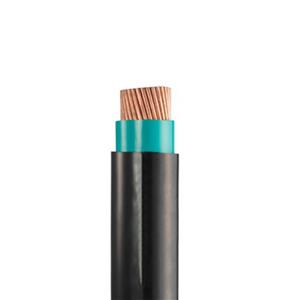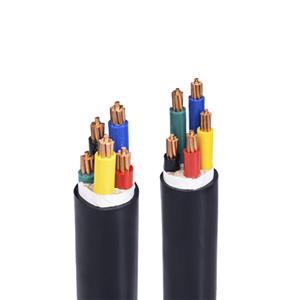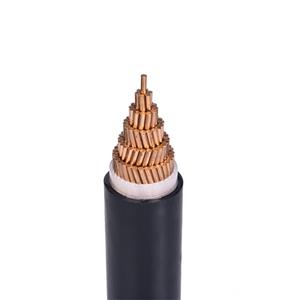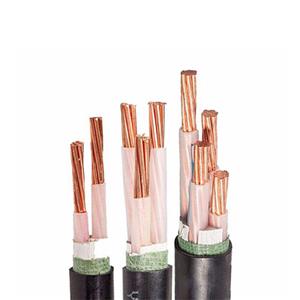Advantages and disadvantages of low smoke halogen-free cables
Low smoke halogen-free cables refer to wires and cables that produce very little smoke when burned and do not contain halogens (such as chlorine, bromine and other halogen elements) in their constituent materials. In terms of constituent materials, the insulation layer and sheath of low smoke halogen-free cables usually use special polymer materials, such as XLPE, and are combined with inorganic flame retardants such as aluminum hydroxide and magnesium hydroxide. These materials not only ensure the basic electrical and mechanical properties of the cable, but also give it the characteristics of low smoke and halogen-free. When encountering extreme situations such as fire, traditional cables will release a large amount of toxic and harmful gases and thick smoke when burned. Low smoke halogen-free cables do not contain halogens, so they will not produce toxic gases such as hydrogen halides when burned. They will only produce a small amount of white smoke, the main components of which are water vapor and carbon dioxide, which greatly reduces the harm to the human body and the environment.

Ordinary cables often use PVC as the insulation layer and sheath material. During the production process, some heavy metal additives are used. Once these heavy metals enter the environment, they will exist for a long time, pollute the soil and water sources, and cause irreversible damage to the ecosystem. Moreover, when the PVC cable is discarded, the incineration will release a large amount of toxic and harmful gases, seriously polluting the air. Low-smoke halogen-free cables are completely different. They use environmentally friendly materials that do not contain halogens, eliminating the use of halogens from the source. In addition, no heavy metal additives are added during the production process, and no toxic gases are produced during the waste treatment. Whether in the production, use or disposal stage, it will not cause harm to the environment and human health. It is truly green and environmentally friendly, which is in line with the sustainable development concept advocated by the world today.
Ordinary cables will release a lot of black smoke when burning. These thick smoke not only seriously affects the line of sight, but also quickly spreads, hindering people's escape and fire rescue. Low-smoke halogen-free cables release very little smoke when burning, which can greatly improve visibility in fires and buy precious time for personnel evacuation and rescue. At the same time, it also has super flame retardant properties. By adding flame retardants such as metal hydroxides, it can quickly self-extinguish after the fire source is evacuated, effectively curbing the spread of fire, greatly reducing the losses caused by fire, and building a solid line of defense for the safety of life and property.
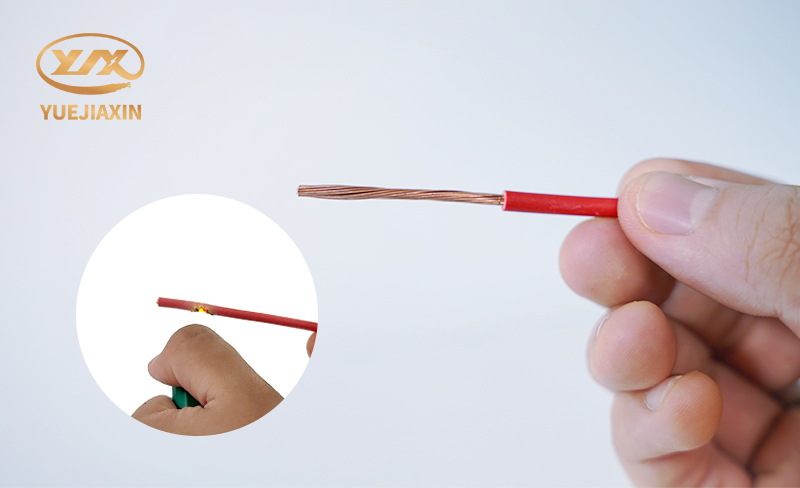
In terms of durability, low-smoke halogen-free cables are also very cost-effective. Because its insulation and sheath materials have excellent aging resistance, they can effectively resist harsh environmental factors such as ultraviolet rays, high temperature, and humidity. Moreover, the electrical performance of low-smoke halogen-free cables is also very stable, which can ensure the stability and reliability of power transmission, reduce power outages caused by cable failures, and reduce replacement and maintenance costs. In the long run, the cost-effectiveness is extremely high. Although low-smoke halogen-free cables have outstanding advantages, they are not perfect. The cost issue is one of its major pain points. The particularity of low-smoke halogen-free cables in materials and manufacturing processes determines that their prices are relatively high. From a material perspective, the environmentally friendly materials such as halogen-free rubber and flame-retardant materials used in it are much more expensive than those used in ordinary cables. Moreover, its production process is more complicated, such as irradiation cross-linking process, which not only increases the difficulty of production, but also reduces production efficiency, further increasing costs. In terms of construction and installation, low-smoke halogen-free cables also have some problems. Compared with ordinary cables, low-smoke halogen-free cables are relatively hard, which puts higher requirements on the technical level and construction tools of construction personnel.
Low smoke halogen-free cables have excellent performance in many places due to their environmental protection and safety characteristics. In crowded public places, such as shopping malls, theaters, schools, hospitals, etc., once a fire occurs, it is difficult for people to evacuate. Low smoke halogen-free cables can effectively reduce the generation of smoke and toxic gases, create favorable conditions for people to escape and fire rescue, and ensure people's life safety. In places with extremely high environmental protection requirements, such as green buildings, scientific research institutions, food processing plants, etc., the use of low smoke halogen-free cables can reduce pollution to the environment and conform to the concept of sustainable development. There are also some places with strict safety requirements, such as data centers, communication base stations, nuclear power plants, etc. The stable performance and high flame retardancy of low smoke halogen-free cables can ensure the normal operation of key equipment and prevent serious accidents caused by cable failures. However, for some small-scale construction projects with limited budgets and relatively low requirements for safety and environmental protection, such as simple decoration of ordinary houses and temporary simple buildings, the lower price of ordinary cables can effectively control costs and meet basic power transmission needs.
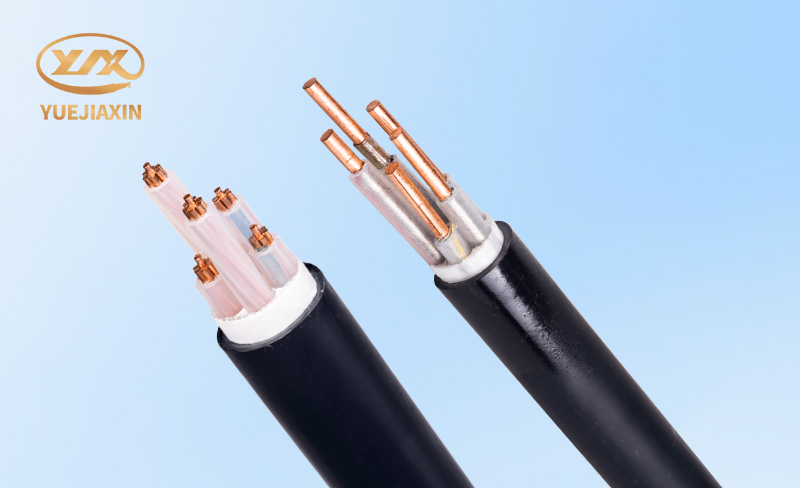
Low smoke halogen-free cables play an important role in many fields with their advantages of environmental protection, safety and durability, providing reliable protection for our lives and work. However, they also have shortcomings such as high cost and difficulty in construction. There is no absolute good or bad in cable selection. The key is to meet specific usage scenarios and needs.

